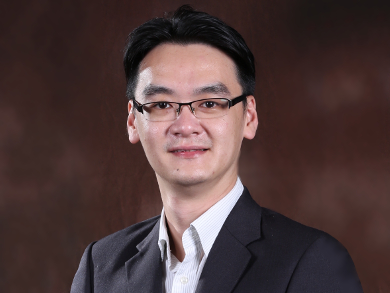Cordula Buse, Deputy Editor of Chemical Engineering & Technology, talked to Dr. Woei-Jye Lau, Advanced Membrane Technology Research Centre (AMTEC) and Universiti Teknologi Malaysia, both Skudai, Malaysia, about his recent article on nanofiltration-like forward-osmosis membranes for the removal of organic compounds from aerobically-treated palm oil mill effluent.
Could you please summarize the basis and findings of your study?
The conventional nanofiltration membrane process requires a relatively large external driving force during operation, typically 10–25 bar. This can result in a rapid flux deterioration within a short period of time caused by severe surface fouling. Forward osmosis requires no external driving force and, thus, can minimize fouling tendency. In forward osmosis, the driving force for separation is based on an osmotic pressure gradient in which water molecules in the feed solution flow through a semi-permeable membrane to the draw solution of significantly higher concentration. It has been successfully demonstrated for seawater desalination and has the potential to address the drawbacks of conventional reverse-osmosis membrane processes.
In our recently published work, we found that the use of nanofiltration membranes for forward-osmosis processes could be suitable for the removal of organic compounds from aerobically-treated palm oil mill effluent. This is due to the unique characteristics of the nanofiltration membrane. It has an excellent rejection rate against divalent salts in the draw solution and against organic pollutants in the feed solution (the effluent).
Palm oil mill effluent is the wastewater discharged from the crude palm oil refinery process and typically has high values for chemical oxygen demand (COD), biological oxygen demand (BOD), and total suspended solids (TSS). In order to meet the local discharge standard, biological-based treatment methods are widely used in the industry. Nevertheless, this kind of treatment process does not completely remove organic pollutants from the effluent and does not produce treated water of good quality for reuse or recycle. Because of this, we examined the potential of using emerging forward-osmosis technology for the biologically-treated effluent in our work.
What was the inspiration for using forward osmosis for palm oil mill effluents?
The successful implementation of reverse-osmosis-like forward-osmosis membranes for seawater desalination processes was the motivation behind this study. We believe the use of membranes that have larger surface pore sizes than the reverse-osmosis membranes could still do a good job. This is provided that an appropriate draw solute is applied and the organic pollutants from the feed solution do not pass through the nanofiltration-like forward membrane to the draw solution.
It is true that reverse-osmosis-like forward-osmosis membranes could also remove organic pollutants from the palm oil mill effluent. However, their much smaller pore size of below 1 nm would create greater resistance for water molecules to pass through and, thus, a lower water flux in comparison to the nanofiltration-like forward-osmosis membranes with pore sizes of 1–10 nm. As a consequence, reverse-osmosis-like forward-osmosis membranes require larger surface areas to achieve the same water flux produced by nanofiltration-like forward-osmosis membranes.
What are the advantages of your approach?
With respect to separation performance, the nanofiltration-like forward-osmosis membrane experienced not only a significantly lower degree of fouling but also showed excellent removal rates for organic compounds. Furthermore, as mentioned already, it does not require an external driving force, which saves energy.
What impact could your method have?
As Malaysia is the second largest crude palm oil producer in the world after Indonesia, the production of large quantity of palm oil mill effluent remains a concern not only to the industry but also to the local people. Because of this, an innovative treatment method is required to achieve the sustainable development of this industry.
Which part of this work was the most challenging?
The most challenging work in this research is to find suitable draw solutes that possess good solubility in water and can achieve a high osmotic pressure. This is because the water permeability of the nanofiltration-like forward-osmosis membrane depends strongly on the properties of draw solution.
What will be the next steps?
One of the main challenges for the industrial-scale implementation of forward-osmosis membrane processes is to maintain the osmotic pressure of the draw solution during operation. To do so, forward-osmosis membrane processes must be integrated with other processes for draw solution regeneration. This will be one of our next steps for this journey.
When will we see your forward-osmosis membrane process on the market?
Although we have shown the potential of nanofiltration-like forward-osmosis membranes for wastewater treatment, further research is still required to move the process to real practical applications. There is a pressing need to make breakthroughs in the development of this kind of membranes and draw solutes, as well as in the design of hybrid systems that combine forward-osmosis systems and draw solution recovery processes.
Which other topics is your research group currently investigating?
Our research group is also carrying out work related to the development of thin film nanocomposite (TFN) membranes for nanofiltration and reverse-osmosis processes, as well as to the fabrication of adsorptive microporous membranes for heavy-metal removal. We are very interested in water and wastewater treatment using membrane-based technologies.
Thank you very much for the interview.
The article they talked about
- Performance of Nanofiltration-Like Forward-Osmosis Membranes for Aerobically Treated Palm Oil Mill Effluent,
Wan Nur Ain Shuhada Abdullah, Woei-Jye Lau, Farhana Aziz, Daryoush Emadzadeh, Ahmad Fauzi Ismail,
Chem. Eng. Technol. 2018, 41, 303–312.
https://doi.org/10.1002/ceat.201700339The article is part of a Special Issue on Membrane Separation. Dr. Lau mainly works on water- and wastewater treatment processes involving membrane-based technologies and served as guest editor for the special issue.




